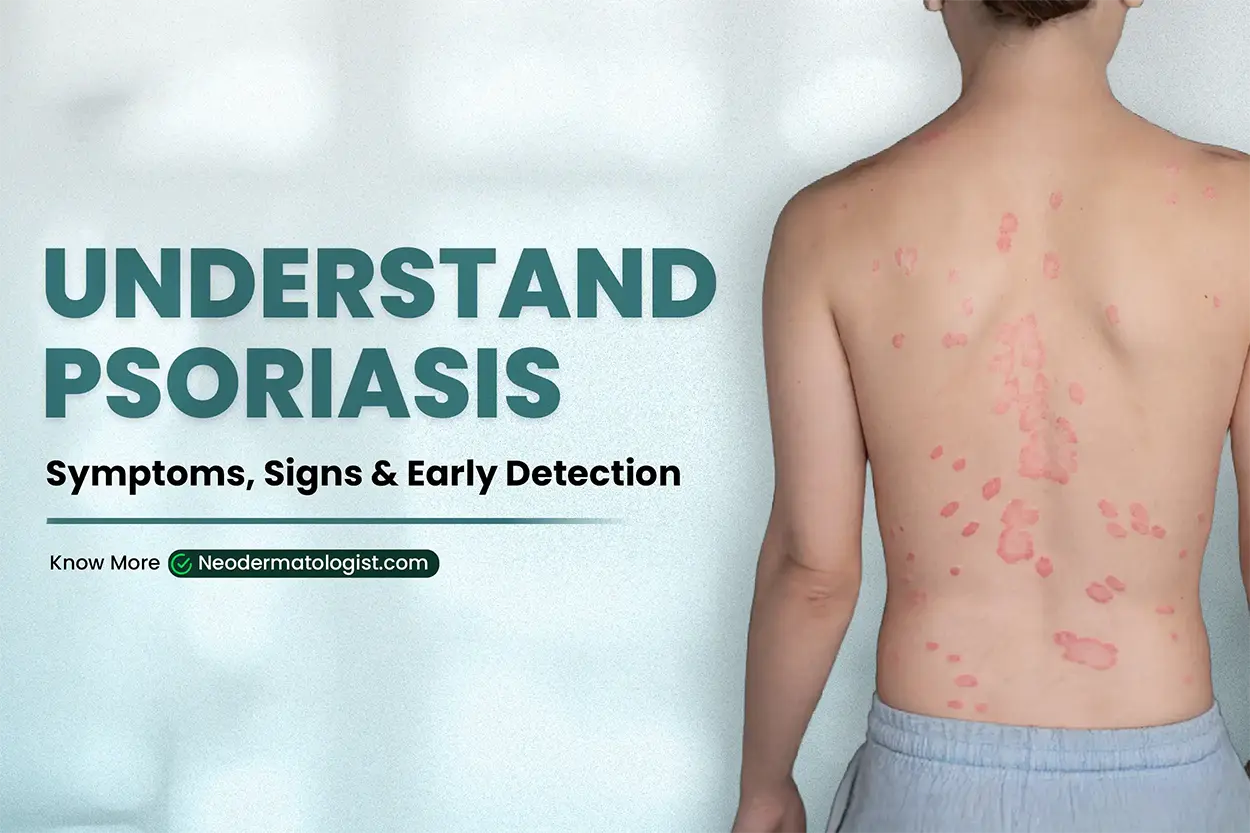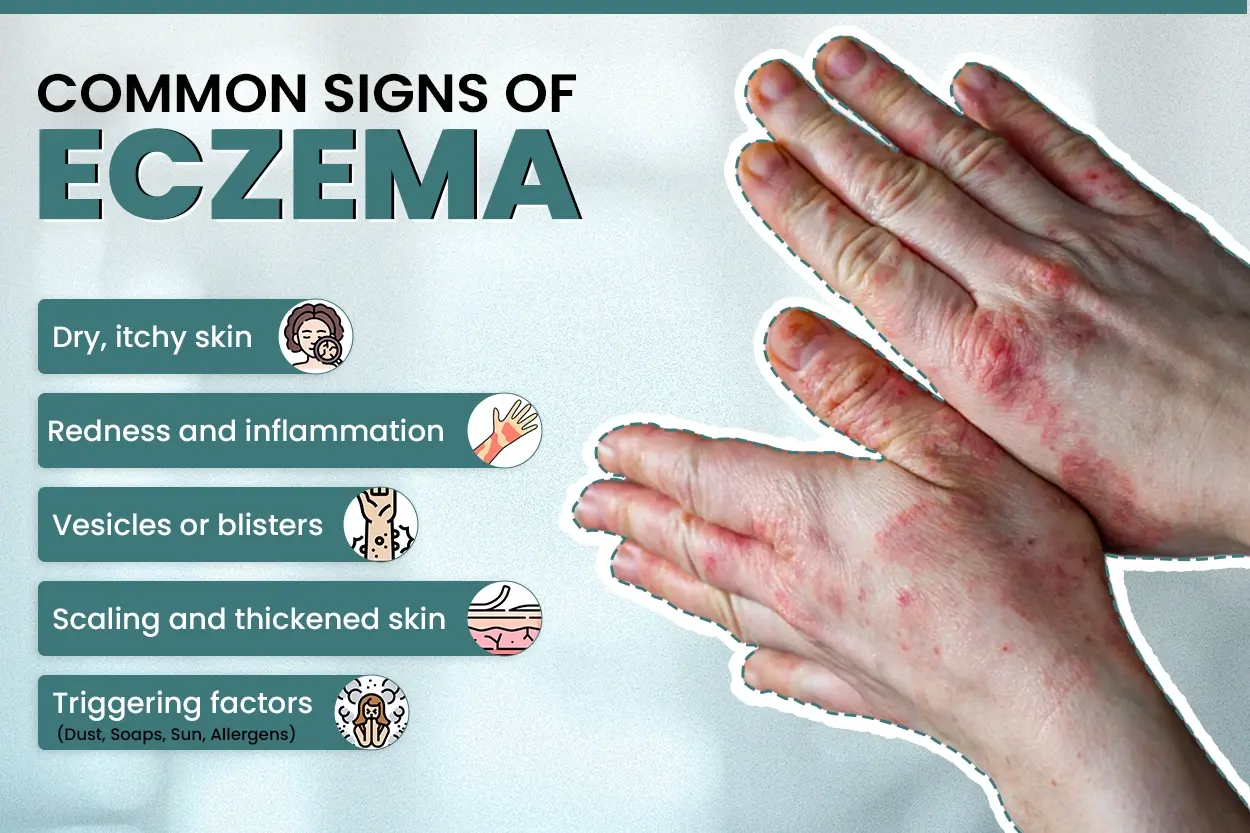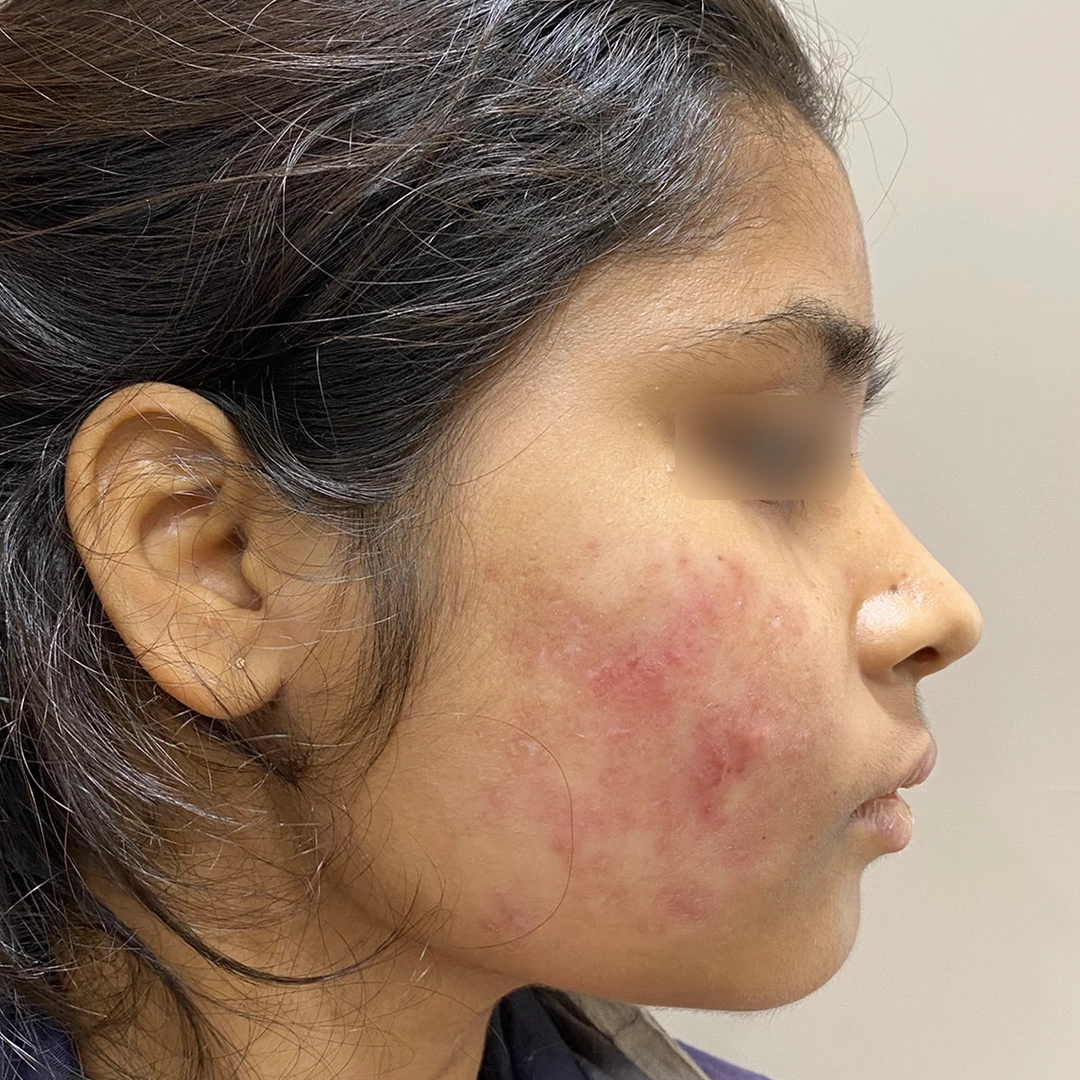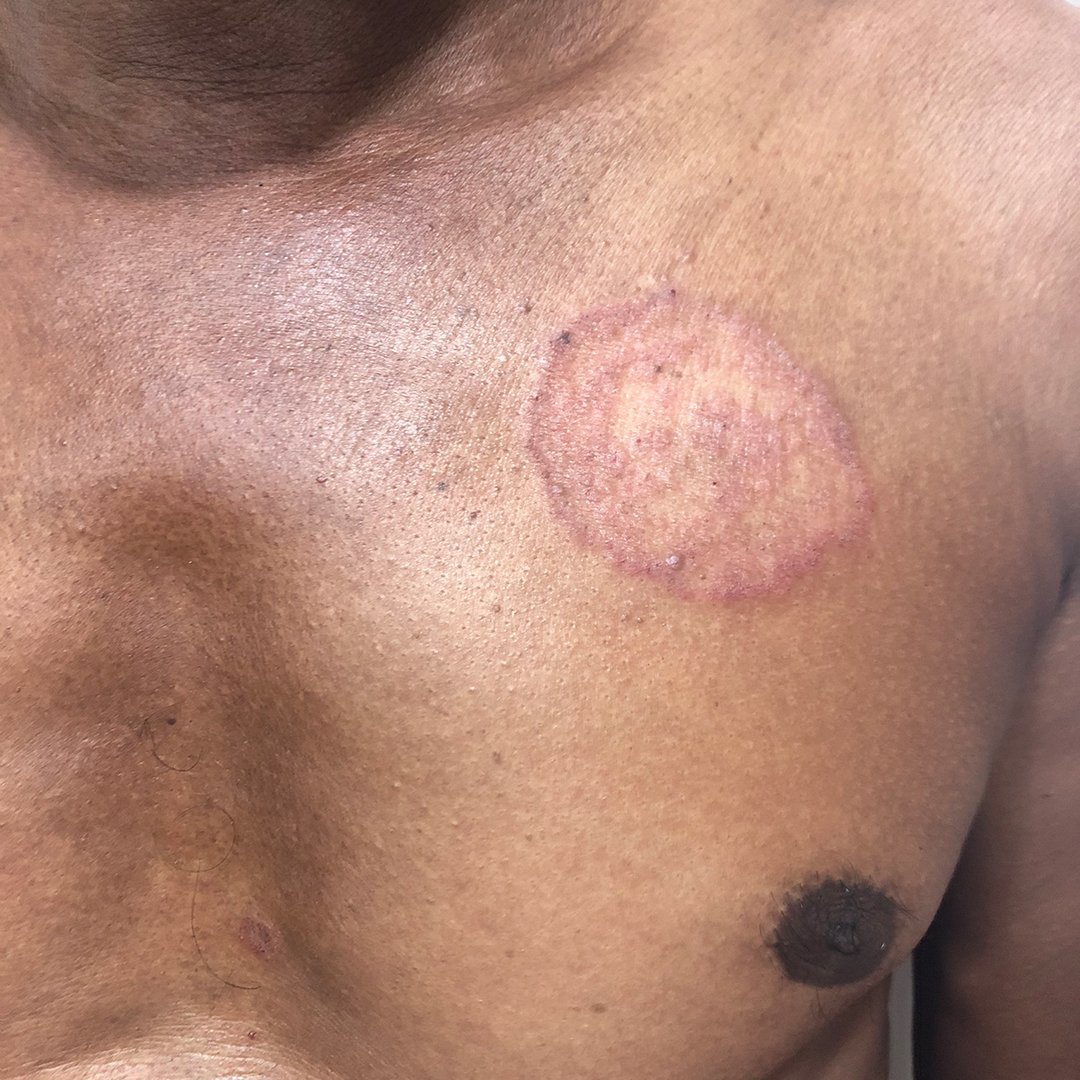
Psoriasis Symptoms: Early Signs, Pictures & Stages Explained
Introduction: Understanding Psoriasis Symptoms
Hello friends,
I’m Dr. Karma Patel, and in today’s discussion, we’ll explore one of the most common yet often misunderstood skin conditions - psoriasis.
- Are you struggling with persistent skin patches, itchy scaling on the scalp, or rough, red skin on your hands or elbows?
- Are you looking for an online dermatologist consultation to cure psoriasis?
- Do you often wonder whether it’s dandruff, dry skin, or something more serious like psoriasis?
If yes, you’re not alone. Many people experience psoriasis without realizing what it truly is or how early signs appear.
In this blog - “Psoriasis Symptoms: Early Signs, Pictures & Stages Explained” - I’ll explain in detail:
- What psoriasis really means?
- Why psoriasis occurs and the factors that trigger it?
- Early symptoms and how they progress over time?
- How psoriasis looks on different skin types and body areas (with picture references)?
- And most importantly, how dermatologists diagnose and choose the right psoriasis treatment options, whether it’s for scalp psoriasis, hand psoriasis, or widespread plaque psoriasis
Psoriasis is one of my key areas of research and clinical interest. Over the years, I’ve worked with numerous patients across different severity levels, helping them manage symptoms effectively through our online plaque & scalp psoriasis treatment dermatologist consultation, our personalized and advanced dermatological care.
So, let’s dive deep into understanding psoriasis - its early signs, stages, and treatment approaches - so you can take the right steps toward healthier skin and lasting relief.
Psoriasis is a chronic inflammatory skin disease that affects millions worldwide. Its symptoms vary from person to person - ranging from mild dry patches to thick, scaly plaques that can cause pain, itching, and discomfort.
Recognizing psoriasis symptoms and signs early is the key to timely treatment and preventing flare-ups. In this guide, we’ll explore the first symptoms of psoriasis, its appearance on the scalp, nails, and body, and how to manage it effectively.
What Are the Common Psoriasis Symptoms?
The symptoms of psoriasis differ depending on the type and severity, but some classic signs are seen in most patients:
- Red, inflamed, and scaly skin patches (plaques) - often covered with thick, silvery-white scales
- Dry, cracked skin that may bleed during flare-ups
- Itching, burning, or soreness around the affected area
- Nail changes such as pitting, ridging, or discoloration
- Skin tightness and pain in severe cases
These psoriasis symptoms and signs can occur anywhere on the body, though the elbows, knees, scalp, and lower back are most commonly affected.
To understand the Scalp and Plaque Psoriasis: Causes, and Types You Should Know in detail, continue reading below.
Psoriasis First Symptoms - How It Starts
In most cases, psoriasis begins subtly before turning into visible scaly patches.
The psoriasis first symptoms may include:
- Slight redness or dryness on certain skin areas
- Mild itching that worsens during cold or stressful conditions
- Dandruff-like flakes on the scalp or eyebrows
- A feeling of tight or sensitive skin even before lesions form
If these early psoriasis symptoms are ignored, the condition can progress into thicker plaques or chronic forms. Detecting these early signs helps you begin treatment faster and manage flare-ups effectively.
Psoriasis Symptoms on Head and in Hair
- White or silver flaking on the scalp and behind the ears
- Red, scaly patches near the hairline or neck
- Itching and irritation leading to discomfort
- Temporary hair loss due to scratching or inflammation
- Small pits, ridges, or dents on the nail surface
- Discoloration - yellow, brown, or white spots
- Nail thickening or brittleness
- Nail detachment from the nail bed (onycholysis)

- Thick, crusted plaques covering large body areas
- Joint pain or stiffness (psoriatic arthritis)
- Severe itching, burning, or cracking of skin
- Swelling or infection risk due to open lesions
- Corticosteroid creams or ointments: Quickly relieve inflammation and redness.
- Vitamin D analogues (Calcipotriol, Calcitriol): Slow down the rapid growth of skin cells.
- Coal tar and salicylic acid: Help remove thick scales and reduce itching.
- Moisturizers and emollients: Prevent dryness and cracking, keeping the skin barrier healthy.
- UVB Narrowband Therapy: The most common and safe option for widespread psoriasis.
- PUVA (Psoralen + UVA): Used for severe or stubborn cases, often under medical supervision.
- Excimer Laser Therapy: Targets small, resistant plaques without affecting surrounding skin.
- Methotrexate: Reduces inflammation and slows cell turnover.
- Cyclosporine: Suppresses immune overactivity that causes psoriasis.
- Retinoids (Acitretin): Help normalize skin cell growth.
- Biologics (Adalimumab, Secukinumab, Ustekinumab): Target specific immune pathways responsible for psoriasis flare-ups.
- Manage stress: Stress is a major trigger. Practice meditation, yoga, or breathing exercises.
- Stay hydrated: Drink plenty of water to maintain skin moisture and elasticity.
- Avoid harsh soaps: Use mild, fragrance-free cleansers to prevent irritation.
- Limit alcohol and smoking: Both can worsen inflammation and reduce treatment response.
- Eat anti-inflammatory foods: Include omega-3 fatty acids, fruits, vegetables, and whole grains.
- Persistent Red or Itchy Patches: If dry, scaly patches on your elbows, knees, scalp, or lower back remain for weeks despite moisturizing or basic treatment, it may indicate psoriasis rather than simple dryness or eczema.
- Cracked Skin That Bleeds or Hurts: Deep cracks or fissures can form when psoriasis lesions become thick or inflamed. These painful cracks increase the risk of secondary skin infections and require medical attention.
- Nail or Scalp Scaling That Doesn’t Improve: Thickened nails, pitting (small dents), or separation of the nail from the nail bed are often signs of nail psoriasis, while persistent flaking on the scalp could be scalp psoriasis, not just dandruff.
- Joint Pain Along with Skin Changes: If you experience joint stiffness or swelling, especially in fingers, knees, or ankles, along with skin lesions, it could be psoriatic arthritis - a condition where psoriasis affects your joints. Early diagnosis is crucial to prevent long-term joint damage.
Smart Diagnosis, Smarter Care:
With SkinMate’s AI-assisted photo consultation, you can easily upload images of your affected skin and receive an initial AI-based analysis within minutes. Certified dermatologists then review your case and provide a personalized treatment plan - all from the comfort of your home.
This approach not only saves time but also helps in early detection and prevention of severe psoriasis flare-ups through continuous online monitoring and expert guidance.
- Online Hair Treatment Consultation
- Treatments For Androgenetic Alopecia Online
- Acne Treatment Online
- General Skin Consultation
- Online Eczema Treatment
- Online Scabies Treatment
- Online Jock Itch Treatment
- Online Ringworm Treatment
- Online Urticaria (Hives) Treatment
- Online Vitiligo Treatment
M.D. Dermatology
A dermatologist specializing in online consultations for skin, hair, and nail concerns. Offers expert care for acne, pigmentation, eczema, scabies, ringworm, scalp infections, dandruff, psoriasis, vitiligo, hives, and hair loss, providing effective, personalized treatment solutions from the comfort of home.
 Hin
Hin En
En





























Comments
Diya Panchal
I’ve been dealing with thick patches on my scalp and back for months, and the itching gets worse during winters. Reading this helped me understand it might be psoriasis. Going to get a proper consultation now.
Post a comment